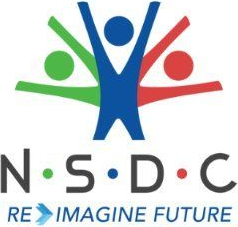Companies Turn to Data Storytelling as ‘Attention’ Becomes a Scarce Commodity

Attention is the new currency: Companies are using AI-powered data storytelling to win the battle for your focus. From finance to healthcare, visual stories are driving real results—think 40% more understanding and 35% better compliance!
- Data storytelling turns complex analytics into engaging narratives, making insights more memorable and actionable for diverse audiences, especially as attention becomes increasingly scarce.
- AI and automation are rapidly taking over data storytelling, with Gartner predicting that by 2025, 75% of data stories will be generated by augmented intelligence and machine learning, signaling a move away from traditional self-service analytics.
- Organizations adopting data storytelling see tangible benefits—like improved client understanding, higher compliance, and more actionable insights—proving that how you share data is now just as important as the data itself
In a world overflowing with information, what’s really running out isn’t knowledge—it’s your attention. Organizations are turning to data-driven storytelling, as attention becomes a scare commodity, for a precious slice of their audience mind-share. Morgan Stanley clocked a 40% improvement in client understanding of highly sophisticated and complex financial products using AI-driven storytelling platforms; Mayo Clinic achieved a 35% increase in patient compliance by implementing interactive data storytelling in health reports; Amazon’s roll-out of AI storytelling tools delivered a 28% increase in actionable insights from customer behavior data. How we share insights is being transformed by the combined power of AI, visual tools, and storytelling techniques – creating the attention economy.
Leaders who turn numbers into narratives in this attention economy gain an edge – because data alone doesn’t move people. Visual stories do. By 2025, Gartner predicts that data storytelling will be the most widespread way people consume analytics. Notably, 75% of data stories are expected to be automatically generated using augmented intelligence and machine learning, rather than by human analysts.
Imagine your mind as a smartphone with a tiny battery. Every ping, post, and headline is like an app fighting to stay open on your screen. Back in the 1970s, Nobel laureate who predicted the future of machines and the importance of data Herbert Simon saw this coming and said, “In a world overflowing with information, what’s really running out isn’t knowledge—it’s your attention.” Think of information as a buffet that never ends: the more dishes pile up, the harder it is to pick what to eat, and soon you’re too full to enjoy anything.
Simon’s point was simple: every time you scroll, click, or glance at something, you’re spending a bit of your limited attention. Just like money, attention is a resource—you only have so much of it each day. But unlike money, you’re asked to spend it constantly, with every notification or ad trying to grab a slice. In today’s world, deciding where to focus your attention is like playing a never-ending game of tug-of-war, with your mind caught in the middle of a thousand voices shouting for your time1356.
So, while we used to worry most about where our money went, now we’re faced with a much trickier challenge: choosing where to spend our attention, minute by minute, in a world that never stops asking for it.
Canva worked with PureSpectrum to survey 2,400 sales and marketing professionals, uncovering challenges and opportunities in organizations’ data practices. 74% say their organization’s reliance on data has increased over the past two years. 88% of professionals feel more confident presenting when their data is visually compelling. 66% of marketing and sales professionals feel anxious when working with data.
Its rise, meanwhile, could signal the demise of self-service analytics. That was the premise of a presentation by James Richardson, a research director at Gartner. By this year a full 75% of data stories will be automatically generated using Augmented intelligence and machine learning rather than generated by data analysts. “It is an inevitability that we move to far higher levels of automation in analytics and that we move away from the current dominant self-service model,” Richardson said. “The self-service and visual paradigm that now dominates BI is a limiting factor. It’s only as good as the individual’s ability to serve themselves.”
Data storytelling fundamentally involves an analyst immersing themselves in a dataset, employing visualization techniques, achieving a moment of insight by constructing a narrative around their findings, and disseminating that narrative to guide decision-making. However, this approach presents significant challenges as it relies entirely on human interpretation, which introduces the risk of an unreliable narrator. “We are prone to errors,” Richardson remarked. “Data stories wield considerable influence, yet they are not without their obstacles. How do we address this issue? One potential solution is to harness computational power to tackle the problem.” It is inevitable that we will advance towards substantially higher levels of automation in analytics, moving away from the current prevailing self-service paradigm.


